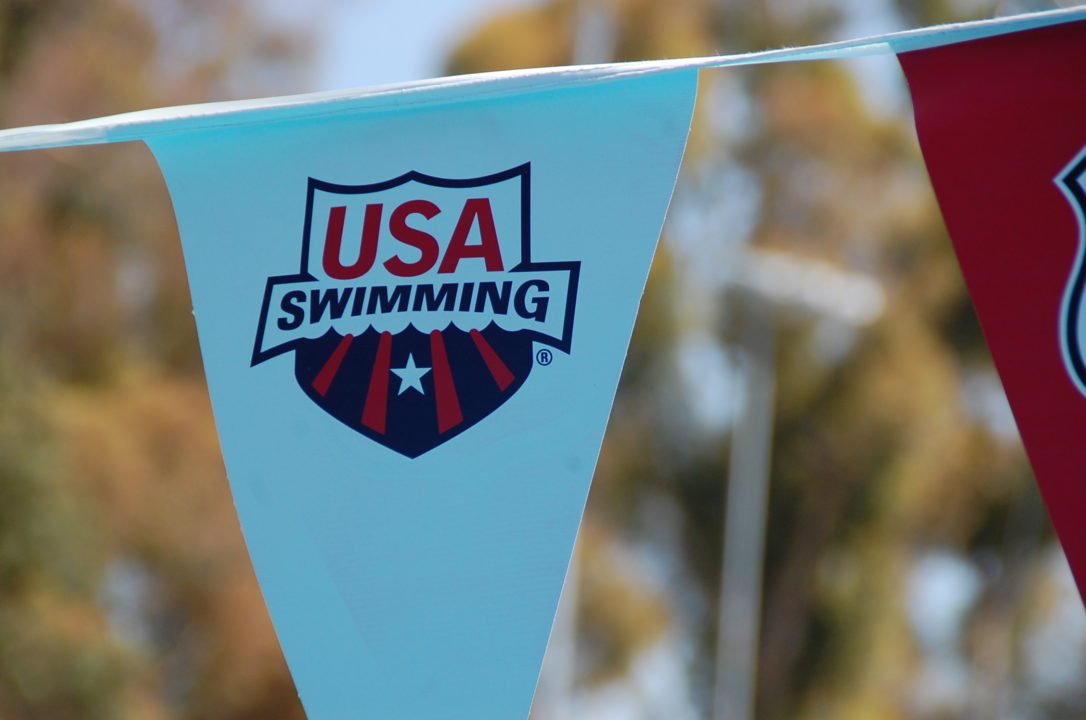USA Swimming‘s Board of Directors passed a motion to extend calendar year and seasonal memberships, and push the proposed flex membership changes to 2022.
The Board of Directors met via Zoom on April 24. The minutes from that meeting include all of USA Swimming‘s financial figures from 2019, along with the changes to memberships amid the coronavirus pandemic, which shut down club swimming for an extended period of time this spring.
You can read the full Board of Directors meeting minutes from April 24 here. We’ve pulled out some of the major points below:
Membership Extensions & Modifications: calendar, seasonal, flex
USA Swimming passed a motion to modify a few forms of membership. Typically, USA Swimming calendar memberships run from January to December. Per USA Swimming‘s site, new or renewing athlete memberships that are processed after September 1 will give an athlete USA Swimming membership through December 31 of the following year.
- Calendar year membership: USA Swimming will move up that September 1 date. Now, any membership application or renewal from June 1 onwards will provide membership through December of 2021.
- Seasonal membership: with the coronavirus cutting short many seasonal memberships, USA Swimming has allowed members to extend those membership. Any seasonal membership that expired on or after March 31, 2020 can be extended to August 30.
- In addition, applications for new or renewed seasonal memberships can ask for that membership to extend for 150 days after USA Swimming officially lifts its moratorium on sanctioned meets. At this point, that moratorium is in place through at least the end of June.
- Flex membership: data showed that USA Swimming‘s flex membership (cheaper, but with limits on how many meets an athlete can compete in) could cost the organization significant revenue, so early this year, USA Swimming passed some changes to the membership. But with financial hardships from the pandemic affecting so many members and member clubs, USA Swimming voted in April to delay those changes until the 2022 season.
Budget: USA Swimming Worked To Shrink Planned Deficit In 2019
USA Swimming typically cycles its budget on a four-year plan. In the first three years of an Olympic cycle, the organization operates at a deficit, with the Olympic year typically bringing in a big enough surplus to offset the deficits over the previous three years and bring the budget back to even.
But in 2019, USA Swimming says its executive management made a “concerted and strategic decision to materially adjust 2019 programming in order to reduce our overall deficit leading into 2020.”
Based on that decision, USA Swimming ultimately reduced its yearly deficit by a little more than $300,000 in 2019 compared to 2018’s deficit:
- 2018: $37,553,627 in operating expenses, $36,099,884 in total revenue for a deficit of about $1.45 million.
- 2019: $39,866,750 in operating expenses, $38,729,817 in total revenue for a deficit of about $1.14 million.
Per USA Swimming‘s report, there were a few factors driving the change:
- Sports and events revenue increased, in part due to $241,000 in unbudgeted income from the International Swimming League.
- USA Swimming saved expenses in the sport development category by cutting the “travel and contract labor” for coach education and development and club education and development.
- USA Swimming also spent less than originally budgeted on membership growth and diversity programs, “due to program and curriculum development.” The organization spent about $207,769 on growth and diversity, most of that coming from the $72,877 Diversity Select Camp.
- While the original budget had “diversity management support” set to almost double from $65,600 in 2018 to $113,500 in 2019, the actual spending actually decreased to just $58,895. USA Swimming says much of that was personnel-related, with one employee’s travel budget being moved from this category to a different one, and one vacant post being filled by an employee who started July 1.
- USA Swimming also saved expenses compared to budget with the national team. The National Junior Team and the National Open Water group had fewer events than originally scheduled, leading to reduced travel costs. USA Swimming also saved about $127,500 in “medals & records” after a 2019 World Championships where the team’s medal tally was a bit suppressed (14 gold, 27 overall) compared to the previous edition (18 gold, 38 overall in 2017).
Meet attendance
The report includes attendance numbers for each of the five 2019 Pro Swim Series events, plus U.S. Nationals (in the summer) and U.S. Open (in the Winter). The Pro Swim Series came in well below goals for ticket sales based on percent of capacity sold, though U.S. Summer Nationals did sell 99% of its capacity.
| Event | Total Ticket Sales | Average per Finals Session | Venue capacity |
% of capacity sold
|
| PSS Knoxville | 1207 | 516 | 1000 | 51.6% |
| PSS Des Moines | 2374 | 826 | 800 | 103.3% |
| PSS Richmond | 1266 | 344 | 700 | 49.1% |
| PSS Clovis | 940 | 373 | 700 | 53.2% |
| PSS Total | 449 | 56.1% | ||
| U.S. Summer Nationals | 5902 | 1180 | 1192 | 99.0% |
| U.S. Open | 3225 | 806 | 1950 | 41.3% |
Online Interaction
USA Swimming also tracks digital interaction in a few ways:
- Unique visits to the USASwimming.org website fell sharply from 2017 to 2018 (5.4 million to 2.2 million), and only rose slightly in 2019 (2.5 million). But the people who are engaging with the site are returning more often, as unique sessions rose in both 2018 and 2019.
- Live streams of competition actually fell off somewhat in 2019, with about 275,000 in 2018 but only about 248,000 in 2019.
- Broadcast numbers (per NBC) aren’t totally complete, but did appear to rise dramatically, from just under 4 million in 2018 to almost 5.4 million in 2019.
